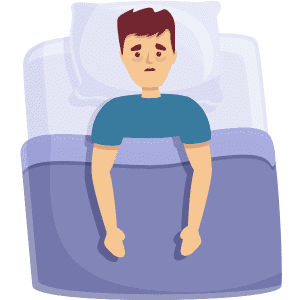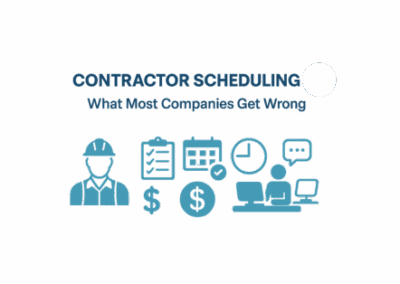Whether you’re a nurse or not, you are probably familiar with workplace stress. We all deal with it from time to time, and we all suffer in different ways. But the phenomenon of nurse burnout has taken over the healthcare community in the last decade, and it’s taking its toll on the nursing workforce at large.
According to a recent study, a staggering 95% reported feeling burnt-out in their nursing position within the last three years.
What is Nurse Burnout?

Nurse burnout not only impacts nurses but of course impacts the patients that they are caring for. A study from The American Journal of Infection Control highlighted the link between nurse burnout and increased likelihood of infections in patients. When we consider the far-reaching effects of nurse burnout, we can see the importance of educating employers on how to recognize and prevent it amongst their workforce.
What are Common Nurse Burnout Symptoms?
Common symptoms of nurse burnout include:
- Emotional Exhaustion: Feeling drained, fatigued, and lacking energy to face another day at work.
- Depersonalization: Developing a cynical or detached attitude towards patients and colleagues, often as a coping mechanism to deal with emotional overload.
- Reduced Personal Accomplishment: Experiencing feelings of incompetence or a lack of achievement and productivity at work.
- Physical Symptoms: Manifesting as headaches, sleep disturbances, gastrointestinal issues, and muscle tension.
- Mental Health Issues: Increased risk of depression, anxiety, and other mental health problems.
- Decreased Job Satisfaction: Feeling dissatisfied, undervalued, or unappreciated at work.
- Compassion Fatigue: Finding it challenging to empathize or feel compassion for patients, often feeling numb or indifferent.
- Increased Absenteeism: Taking more sick days or personal days off due to mental, emotional, or physical exhaustion.
- Impaired Concentration and Attention: Difficulty focusing, making decisions, or remembering details, which can affect patient care.
- Detachment from Personal Life: Withdrawing from social activities, family, and friends, often feeling too exhausted to engage in personal life.
What Causes Nurse Burnout?
Although it differs across the board, there are some very clear factors that contribute to Nurse Burnout;
- Long Shifts
- Caring for Others
- Working Environment
- Dealing with Sickness/Death
- Lack of Sleep
Long Shifts

A study published in MEDSURG Nursing found that the 146 registered nurses studied walked an average of 4–5 miles during a 12-hour shift. For comparison, most Americans walk just 2.5–3 miles during the course of an 18-hour day. Although these long, active shifts might be sustainable for some time, the cumulative effects can be detrimental to nurse well-being.
Caring for Others
By nature, nurses are driven by a desire to care for others, in fact, for most that’s how they chose their career path. It goes without saying that in a work environment nurses are required to put patient needs before their own. However, this often carries over into other aspects of their lives, and they end up neglecting their own needs. We all know the saying that we cannot pour from an empty cup, and that couldn’t be more true about nurse burnout.
Work Environment & Workload
Of course, every nursing specialty has a unique environment, and some are more stressful than others. Among the most stressful environments are general hospital settings, and specifically emergency departments. However, any workplace for a nurse could be seen as stressful and hectic due to their workloads.
We’ve spoken about the typical workload of a nurse during a shift here. In fact, nursing responsibilities have increased over the last 15 years due to advancements in technology, documentation, and electronic medical record maintenance. This is a huge reason for increased rates of burnout in nurses.
Nursing responsibilities have increased over the last 15 years due to advancements in technology, documentation, and electronic medical record maintenance.
Dealing with Sickness & Death
At the best of times, it’s hard for all of us to leave work “at the office” and switch off once our shift ends. Almost every single workday, nurses are exposed to serious illness and death. As you can imagine, being around sick & dying patients every day can cause a build-up of emotional baggage and unresolved grief.
Dealing with lower recovery and higher mortality rates can lead to compassion fatigue and increased rates of burnout. Not only will this impact nurses in their work lives, but it will eventually carry over into their personal life too.
Lack of Sleep

When we consider this along with daily dealings with sickness and death, it becomes clear how easy it is for nurses to fall victim to burnout.
How to Prevent Nurse Burnout
Although nurse burnout has been an industry-wide issue for many years now, there are steps that you can take as an employer to proactively prevent and counteract your nurses from burning out.
Learn to Recognise Burnout
The first step in preventing and addressing nurse burnout within your workforce is to recognize it. The key here is to monitor typical symptoms of burnout, such as increased absenteeism, nurses withdrawing from workplace relationships and becoming isolated, and nurses that become frustrated with small inconveniences. We mentioned these above.
It’s also important to educate your nurses to recognize the early signs of burnout for themselves. When everyone is aware of the issue, you can all take the necessary steps to address high stress levels early on, and avoid reaching the point of complete burnout.
Improve Nurse-Patient Ratios
Research has shown that nurse-patient ratios are directly related to burnout rates. The Journal of the American Medical Association found nurses in hospitals with 8:1 patient-to-nurse ratios are more than twice as likely to show high levels of emotional exhaustion as nurses in facilities with 4:1 ratios. We know what you’re thinking, lower nurse-patient ratios will likely require more nurses, right? However, this expense will not only reduce burnout, but it will also tackle high nurse turnover, patient satisfaction and even patient outcomes.
Implement Support Programs

The best way to ensure you are supporting your nurses is to ask them what they want/need. A study from Inquiry explains that when nurses feel a lack of autonomy and control over their practice, they are more likely to experience burnout.
Involve Nurses in Scheduling
Tying into how nurses thrive when given autonomy over their practice, another way to achieve this is by involving them in the scheduling process or providing them with flexible schedules. A recent survey found that 55% of nurses said having more control of their schedule would reduce fatigue, and 60% said they would have a better work/life balance if they were more involved in their shift scheduling.
If you don’t already use employee scheduling software for your employee shift scheduling, this is the best way to involve nurses in the scheduling process. Be sure to look for software that has shift bidding and self-scheduling features, like Celayix.
Lighten the Workload
If you’re not in a position to improve nurse-patient ratios, or even if you can do that, its important to look at your nurses’ workload and reduce non-clinical tasks. Although nurses are highly trained professionals, most of them find that a large chunk of their time is spent carrying out non-clinical tasks. Handing these non-clinical tasks off to support staff will depressurize your nurses’ workload, and reduce the likelihood of burnout.
Nurse burnout problems have been around for a long time now and will likely be around for years to come. As an employer, if you can implement the above steps, you’re on the right path to protecting and supporting your nurses. Your nurses will be happier and you will reap the rewards for it.
If you’re looking for shift scheduling software that allows you to include your nurses in the process, Celayix is happy to help. Reach out to one of our Solution Advisors today to see how we can assist you in supporting your nurses.




